16 of the most endangered animals in South America in 2025
16 of the most endangered animals in South America in 2025
South America includes some of the most biodiverse places on Earth, such as the Amazon Rainforest. Unfortunately, as the native wildlife increasingly face drought, rising temperatures, human activity, and disease, many of these species are in serious danger.
For 2025 and beyond, IFAW continues to focus on supporting the rescue and rehabilitation animals in South America and around the world, combatting the illegal wildlife trade to keep these animals in their natural habitats where they belong, and fostering harmonious coexistence between humans and wildlife to reduce retaliatory killings.
Learn more about some of the most endangered animals in South America, from poison dart frogs to wild guinea pigs.
1. Glass frogs
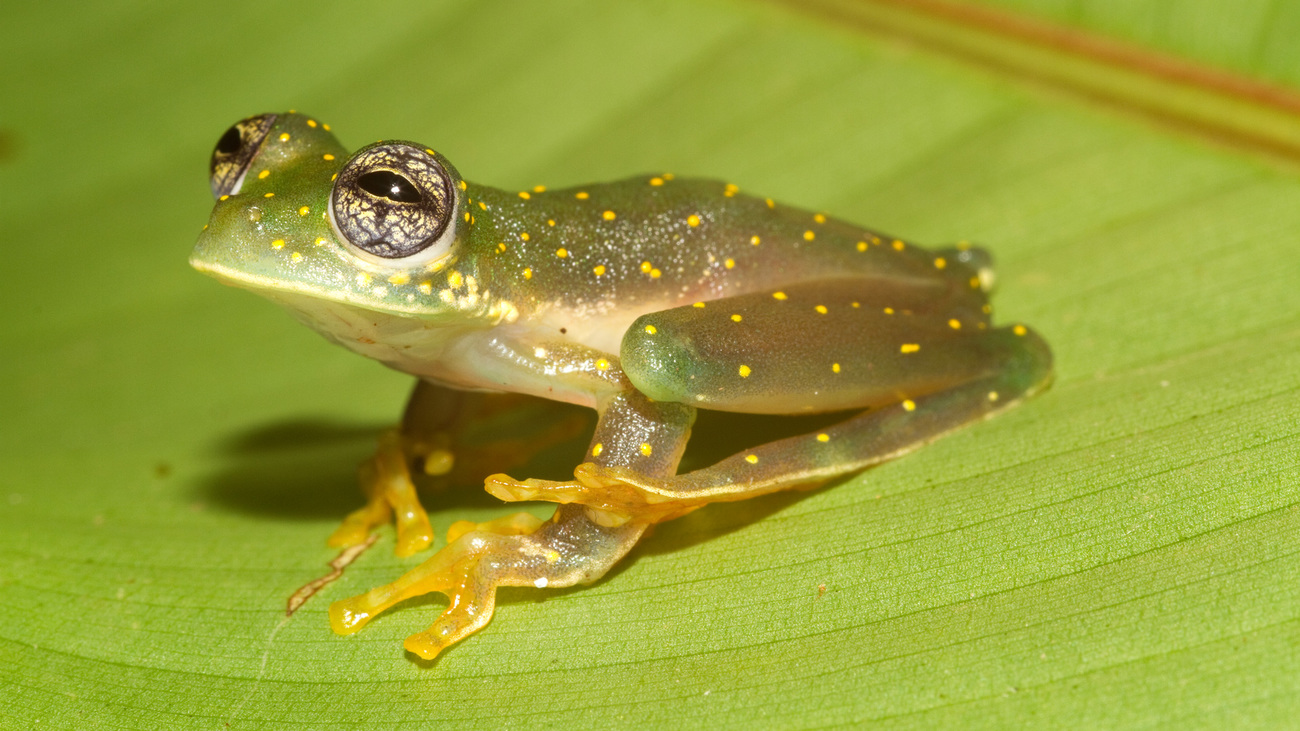
Glass frogs are amphibians in the family Centrolenidae, some of which are known for their transparent and translucent skin, which makes their internal organs visible. There are over 150 species of glass frogs, 80 of which have a threatened status.
As of 2025, 11 glass frogs are classed as critically endangered by the IUCN and have continuously declining populations. These include Buckley’s glass frog (Centrolene buckleyi), the Maduriacu glass frog (Nymphargus manduriacu), the ridge cochran frog (Cochranella euhystrix), Trueb’s cochran frog (Nymphargus truebae), Wiley’s glass frog (Nymphargus wileyi), Nymphargus mixomaculatus, Nymphargus armatus, the large-headed glass frog (Nymphargus megacheirus), the Pacific giant glass frog (Centrolene geckoidea), Sucre’s glass frog (Nymphargus sucre), and the Amazon giant glass frog (Centrolene pipilata).
Glass frogs are threatened by the exotic pet trade. They should not be kept as pets, as they are wild animals that require specialized care. Habitat loss from human activity is also an issue, in addition to climate change, which is making their habitats hotter and drier. In 2022, international leaders increased global protections for glass frogs under CITES.
2. Titi monkeys
Monkeys of the subfamily Callicebinae are known as titi monkeys; they are native to South America and inhabit dense forests near bodies of water. Titi monkeys are very small primates—typically similar in size to rabbits. There are at least 31 species of titi monkeys.
Unfortunately, six titi monkey species are still listed as critically endangered in 2025—and the situation isn’t improving as all critically endangered species have declining populations. These include the San Martin titi monkey (Plecturocebus oenanthe), Olalla Brothers’ titi monkey (Plecturocebus olallae), the Caqueta titi monkey (Plecturocebus caquetensis), Grove’s titi monkey (Plecturocebus grovesi), the blond titi monkey (Callicebus barbarabrownae), and Viera’s titi monkey (Plecturocebus vieirai). There are only 100 to 250 estimated remaining blond titi monkeys.
Illegal pet trade, deforestation and habitat fragmentation due to agriculture, urbanization, and highway construction are just some of the major threats to titi monkeys’ survival.
3. Poison dart frogs
Poison dart frogs—members of the family Dendrobatidae—are some of the most strikingly colorful animals on the planet.
Of the nearly 200 living species of poison dart frogs, over half are considered threatened. La Planada poison frog (Paruwrobates andinus), Collins' poison frog (Andinobates abditus), and the green poison frog (Andinobates viridis) all have fewer than 50 remaining individuals and may go extinct in 2025.
A deadly fungus known as the amphibian chytrid fungus (or Bd) is blamed for mass fatalities of many of these amphibians. The exotic pet trade, logging, pollution, deforestation, and land development also pose threats to the future of poison dart frogs.
4. Glaucous macaw
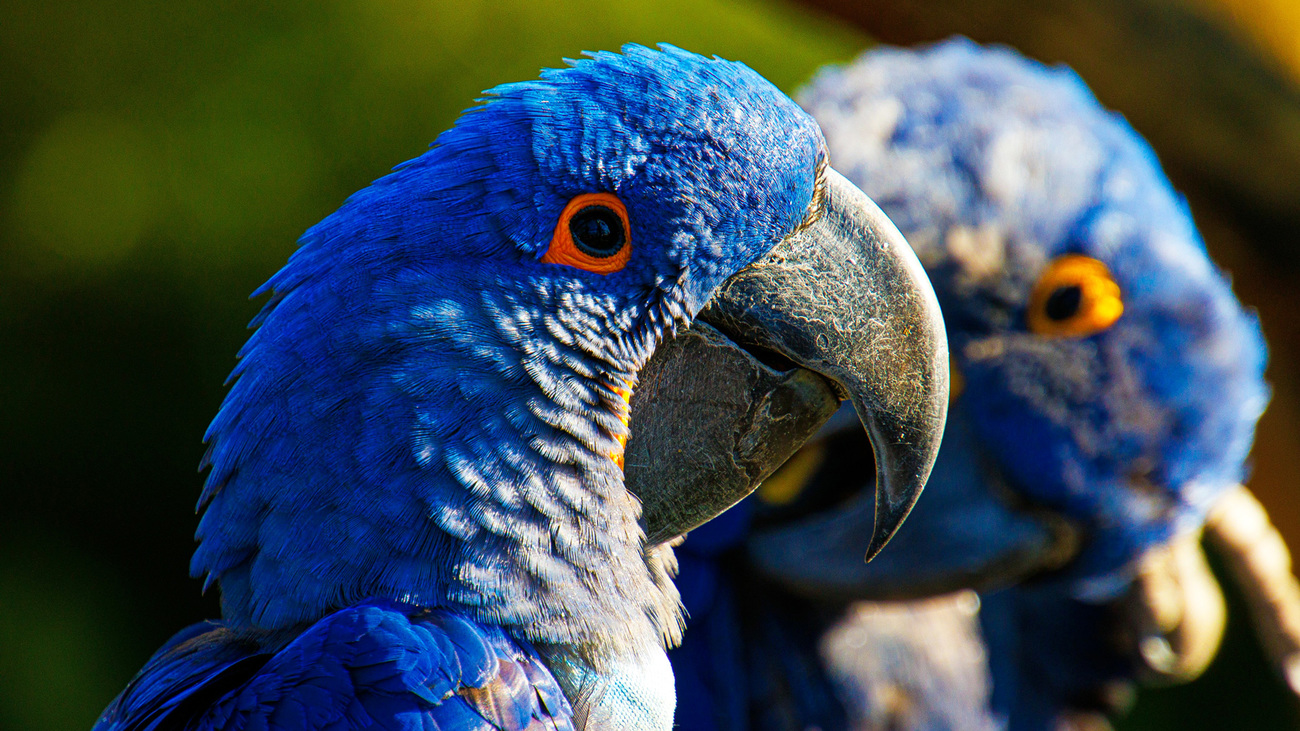
The glaucous macaw (Anodorhynchus glaucus)—considered possibly extinct—is a parrot with striking blue and grey plumage native to a small region spanning parts of Argentina, Uruguay, Paraguay, and Brazil. It’s closely related to the hyacinth macaw, which is the largest living parrot species. The glaucous macaw has not been seen since 2001, so if the species still survives, it’s likely with a population of 20 or fewer.
Early colonists of South America likely cleared Yatay palm trees, on which the species probably relied for food. It’s unknown, but researchers speculate that the bird may also have been hunted or traded.
5. Galápagos pink land iguanas
The Galápagos pink land iguana (Conolophus marthae) is a reptile native to the Galápagos Islands. It’s called pink because of its pink head, neck, legs and markings down its back and underside.
Critically endangered since 2012, there are only about 192 pink land iguanas left as of 2025. Invasive rats and feral cats prey on their eggs and hatchlings, and volcanic eruptions are also a threat to these iguanas. Droughts also affect this species, causing food scarcity.
6. Santa Catarina’s guinea pigs
A member of the same genus as the domesticated guinea pig, Santa Catarina’s guinea pig (Cavia intermedia) is a critically endangered species that lives only on Moleques Island do Sul, in the state of Santa Catarina, Brazil. There are only 24-60 estimated individuals left. Hunting is presumed to be a threat to this guinea pig, as people have free and largely unregulated access to the small island they inhabit.
7. Giant tortoises
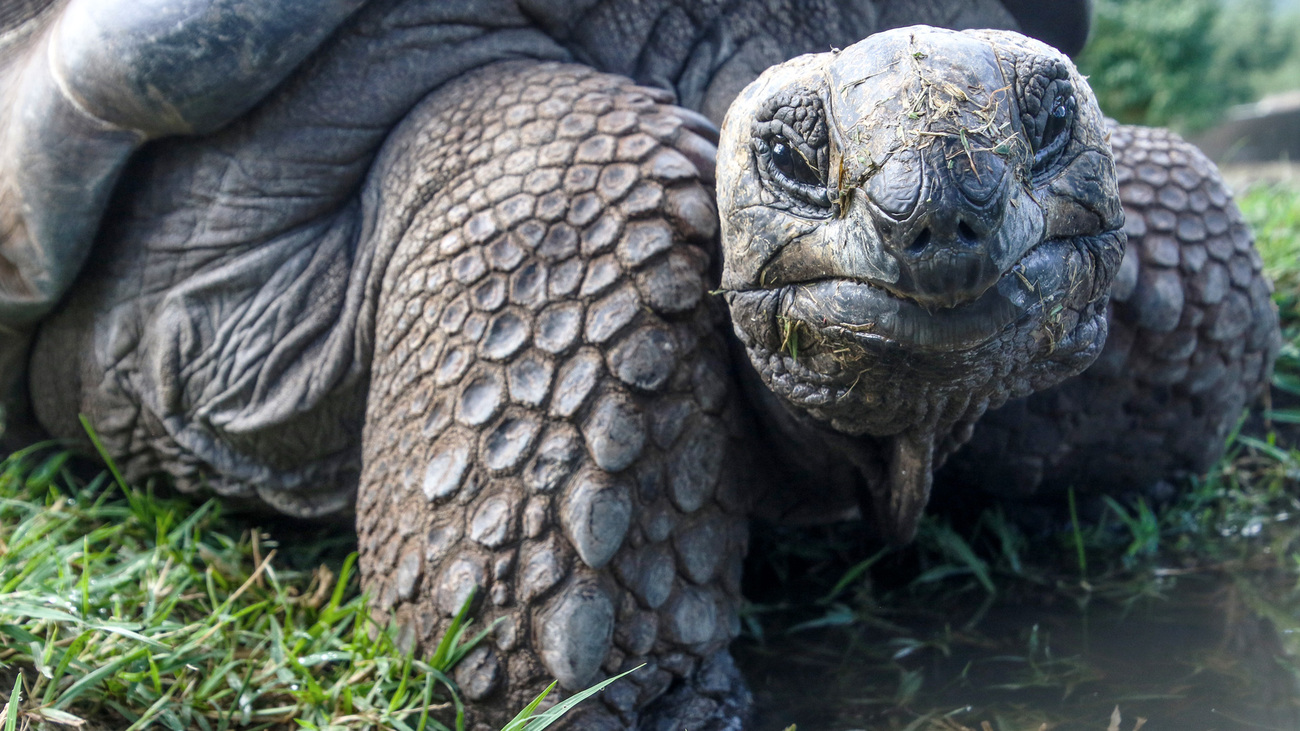
A number of giant tortoises native to the Galápagos Islands are critically endangered, all subspecies of the Galápagos giant tortoise. This includes the Fernandina giant tortoise, which is at great risk of extinction with fewer than five individuals remaining. The Sierra Negra giant tortoise is also vulnerable with just 400 to 700 individuals.
Four other giant tortoises are classed as critically endangered but their populations are on the rise. This includes the Eastern Santa Cruz giant tortoise, of which there are about 250 individuals remaining, the Santiago giant tortoise, which has 500 to 1,700, the Western Santa Cruz giant tortoise, of which there are about 3,400; and the Española or Hood Island giant tortoise, of which there are 100 to 200 individuals.
These giant tortoises experienced staggering population decline from the 1600s to the 1800s, when they were hunted for their meat. Though hunting the tortoises is now illegal, poaching still remains a threat today. So do habitat loss, invasive plant species, and invasive species.
8. Cherry-throated tanagers
The cherry-throated tanager (Nemosia rourei) is a small black, white, and red bird currently living only in the Brazilian state of Espírito Santo. Quarrying of limestone, granite, and marble has contributed to habitat loss for this species, in addition to illegal palm extraction, the expansion of coffee plantations, small-scale firewood cutting, and large-scale timber cutting. The cherry-throated tanager’s population is estimated to be 30-200 individuals and continues to decline in 2025.
9. Pied tamarins

The pied tamarin (Saguinus bicolor) is a white- and brown-furred, black-faced primate species native to the Amazon in Brazil. It typically measures 18 to 30 centimeters (seven to 11 inches) in body length with a 12- to 14-centimeter (five- to six-inch) tail.
Sadly, the pied tamarin faces the threats of deforestation and habitat fragmentation due to human expansion, agriculture, livestock production, and road and energy infrastructure development. The species is critically endangered and has a declining population.
10. Turquoise-throated pufflegs
The turquoise-throated puffleg (Eriocnemis godini) is a bright green and blue species of hummingbird native to Ecuador. It’s called a ‘puffleg’ because it has striking white tufts of downy feathers on its legs. There are fewer than 50 turquoise-throated pufflegs remaining in the wild, as their habitat has been almost completely destroyed.
11. Orinoco crocodiles
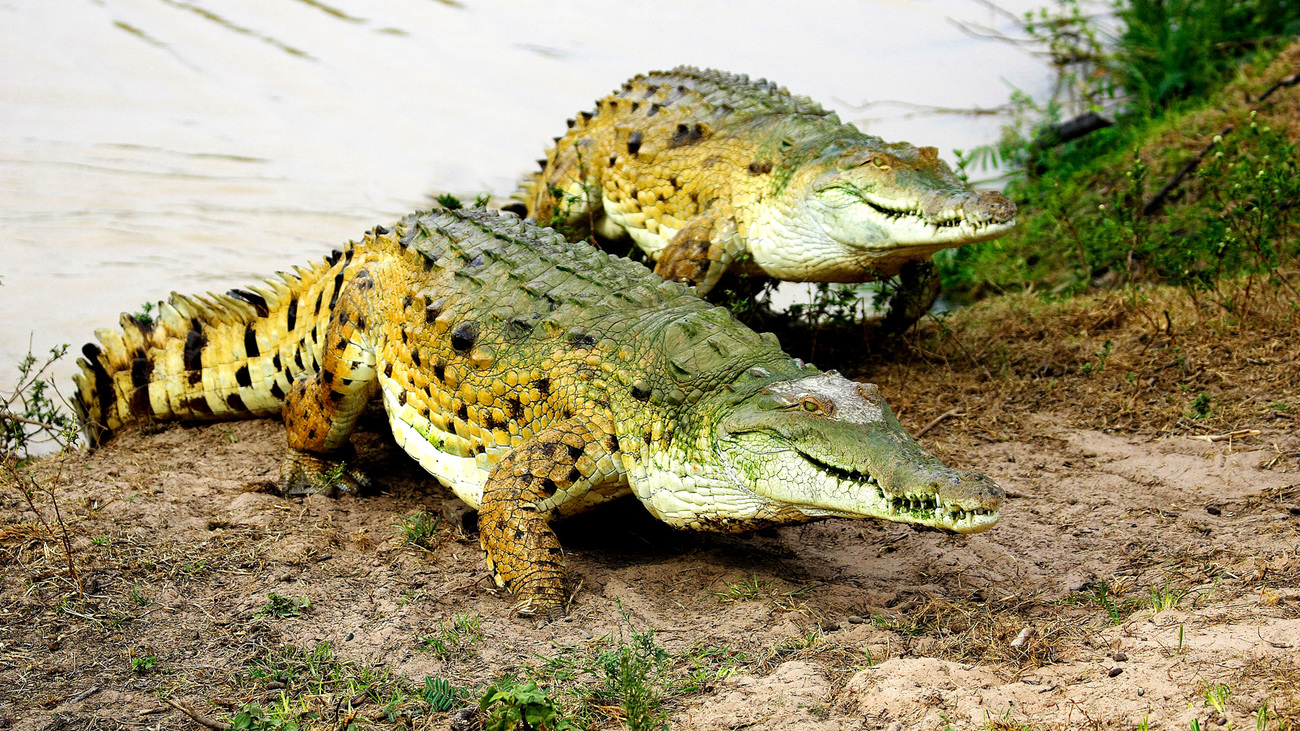
Hunted for their skins in the 19th and 20th centuries, the Orinoco crocodile (Crocodylus intermedius)—native to Colombia and Venezuela—is critically endangered and has a very limited population today. Estimates suggest that there are around 190 Orinoco crocodiles left and its population is still declining. Despite hunting the crocodile being banned, it is still poached for its meat and eggs, as well as out of fear.
The Orinoco crocodile is a bit bigger than the American crocodile, reaching five meters (16 feet) long. Due to their large size, hunting them for their skin was once a profitable endeavor.
12. Pernambuco pygmy owls
The Pernambuco pygmy owl (Glaucidium mooreorum) is a small owl native to the state of Pernambuco, Brazil. Possibly extinct, there are fewer than 50 individuals remaining.
This owl has been threatened by habitat loss, in part due to clearance for sugar plantations, and hunting.
13. Belem curassows
Also known as the Mytunxî, the Belem curassow (Crax pinima) is a large bird native to northeastern Brazil. Curassows are the largest cracid birds, which are ground-feeding birds similar to turkeys, quail, and chickens. There are fewer than 50 Belem curassows left, and they sadly live in the most deforested area of the Amazon. Hunting also poses a threat to their survival.
14. Red-crested tree rats
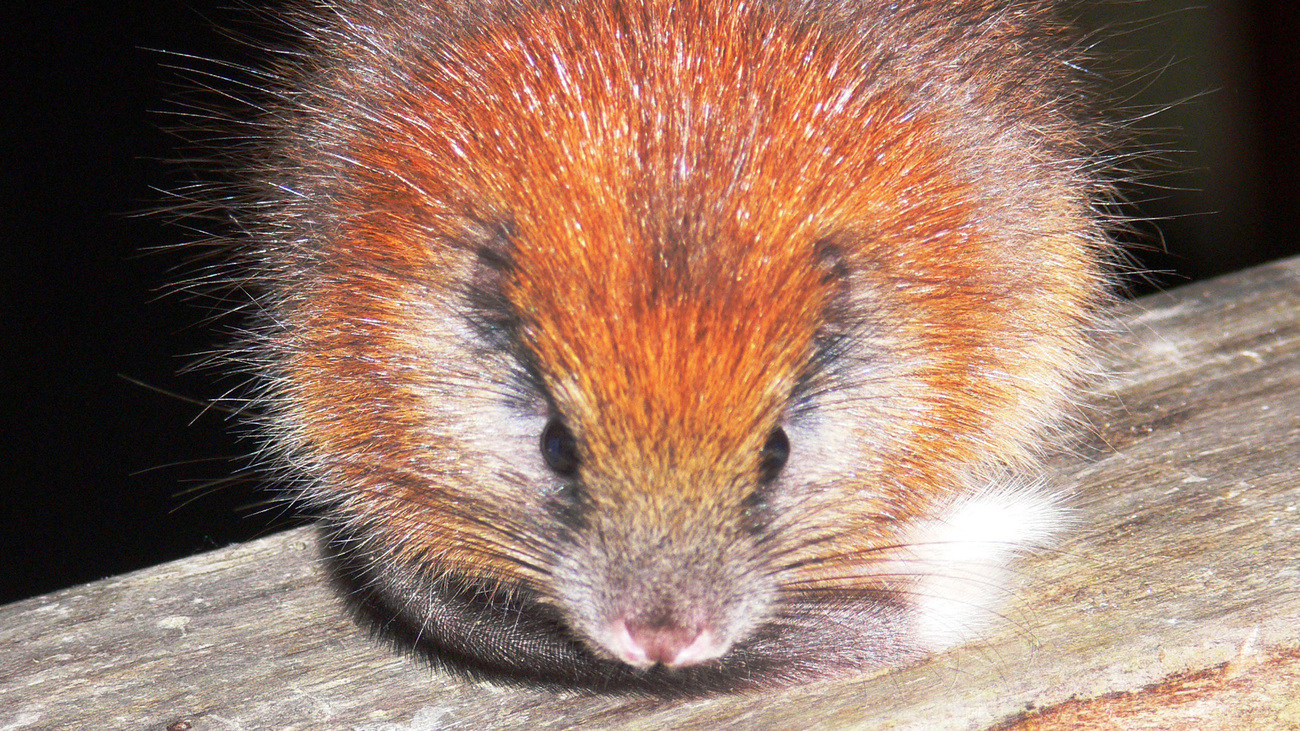
The red-crested tree rat (Santamartamys rufodorsalis) is a small rodent recognizable by its bright red-orange markings. It lives only in a very small area near the north coast of Colombia. This species is in critical condition—there are between only 1 and 50 red-crested tree rats remaining. While specific threats to the species are unknown, its habitat has been degraded over time by the expansion of housing, agriculture, livestock farming, and drought.
Though it was thought to be extinct as it hadn’t been seen since 1989, the red-crested tree rat was rediscovered in 2011. However, a 2016 concentrated survey around the El Dorado Reserve spotted no individuals during a series of repeated nocturnal spotlight surveys, so the status of this species has once again come into question.
15. Southern eyelash boas
The southern eyelash boa (Trachyboa gularis), also called the Ecuadorian eyelash boa, is a possibly extinct nonvenomous snake species native to Ecuador. There are fewer than 50 of these snakes remaining, and there is almost no suitable habitat remaining, as savannah areas have been converted (and continue to be converted, even in 2025) for agricultural use. Little is known about the southern eyelash boa, but it is closely related to the more common northern eyelash boa. It has small, eyelash-like scales around its eyes, which is how it got its name.
16. Harlequin frogs
Classed within the toad family, harlequin frogs or toads are the members of the genus Atelopus, which contains nearly one hundred different living species. These toads are generally small, brightly colored, and diurnal.
At least three species of harlequin frogs are now extinct, including the chiriqui harlequin frog (Atelopus chiriquiensis), maracay harlequin frog (Atelopus vogli), pass stubfoot toad (Atelopus senex). A further 62 of these species are critically endangered, including the variable harlequin frog (Atelopus varius), which is thought to be extinct in much of its range, the longnose stubfoot toad (Atelopus longirostris) and mindo harlequin frog (Atelopus mindoensis) of which there are fewer than 50 remaining individuals, and the darien stubfoot toad (Atelopus certus) which has a decreasing population.
The deadly amphibian chytrid fungus impacts these amphibians, as does habitat loss due to human activities. However, there is hope as we look to 2025 and beyond. One species thought to be extinct, the Azuay stubfoot toad, was recently rediscovered, and the toads these scientists found did not show signs of the fungus.
Protecting South America’s most endangered animals
IFAW works to help protect South America’s most endangered animals and prevent them from going extinct. To support conservation efforts in South America, our top priorities are preventing wildlife trafficking and championing wildlife conservation locally.
We recently collaborated with Jakarta Animal Aid Network (JAAN), the Jane Goodall Institute (JGI), and Legal Atlas to help train over 200 officers on evidence management, animal handling, and biosafety. We provided them with the tools to safely confiscate illegally trafficked animals—like titi monkeys—and offer proper care while the animals are in custody. We also offered practical and sustainable solutions to enhance laws and regulations, benefiting both frontline officers and the animals they protect.
We’ve also joined forces with the Convention on International Trade in Endangered Species of Wild Fauna and Flora (CITES) to campaign for a political declaration that would make tackling wildlife trafficking a regional political priority. Our aim is for every South American country to endorse the declaration.
Most recently, we attended COP16 and were actively engaged in global dialogues on the Rio Conventions—including the Convention on Biological Diversity (CBD) and United Nations Framework Convention on Climate Change (UNFCCC)—championing policies that emphasize wildlife protection.
Want to help support conservation efforts that save endangered species?
Related content
every problem has a solution, every solution needs support.
The problems we face are urgent, complicated, and resistant to change. Real solutions demand creativity, hard work, and involvement from people like you.